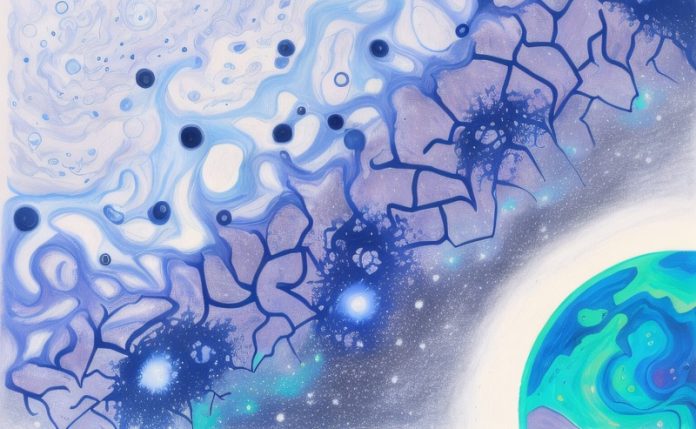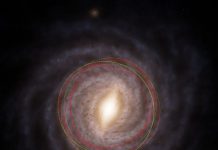
Scientists at the University of Michigan have made a surprising discovery: the giant structures of the universe, like clusters of galaxies, are growing more slowly than we thought they would, according to Einstein’s Theory of General Relativity.
Let’s break this down a bit. Our universe is vast and mysterious, full of galaxies that are like dots on a giant cosmic web. These galaxies don’t just pop up anywhere; they tend to group together, forming clusters.
The scientists think of the process as a fabric loom creating sheets, filaments, and nodes, where galaxies live along the filaments and clusters of galaxies sit at the nodes.
Now, there’s something else in our universe called dark energy.
We can’t see it, but scientists believe it’s there because it seems to be making the universe expand faster and faster.
Here’s the interesting part: while dark energy is making the universe expand, it’s doing the opposite to the large structures like galaxy clusters—it’s slowing down their growth.
The team of researchers, led by Minh Nguyen, used a couple of cool techniques to study this. They looked at the cosmic microwave background, which is like a snapshot of the very early universe just after the Big Bang.
By studying the distortions in this background, they can understand how structures and matter are spread out between us and the early universe.
They also studied how light from galaxies is distorted by interactions with matter and other galaxies, giving them even more information on how matter is distributed in the universe.
They found that these large structures of the universe are growing more slowly than what our current theories and models suggest, especially as we get closer to the present day. This discovery might help solve a big puzzle in science, the so-called S8 tension.
This tension is about a disagreement in the scientific community when using two different methods to measure the growth of structures in the universe.
One method suggests a higher value than the other. This new finding of slower growth might just reconcile these differing values, bringing a newfound agreement in the scientific community.
Nguyen and his colleagues were quite taken aback by the strong indication of this slower growth. Dragan Huterer, one of the researchers, even said it felt like the universe was trying to tell them something, and now it’s up to the scientists to figure out what that is.
The big question now is why these structures are growing more slowly than what our standard theories of dark matter and dark energy suggest.
Is there something more to dark energy and dark matter that we haven’t discovered yet, or is there some other extension to General Relativity and our standard model that we haven’t considered?
In simple terms, the universe is full of wonders and mysteries, and scientists are like detectives, trying to understand the clues it leaves behind. This new discovery is like finding a new piece of a giant cosmic puzzle, and who knows what other secrets the universe is whispering, waiting for us to understand!
Follow us on Twitter for more articles about this topic.



